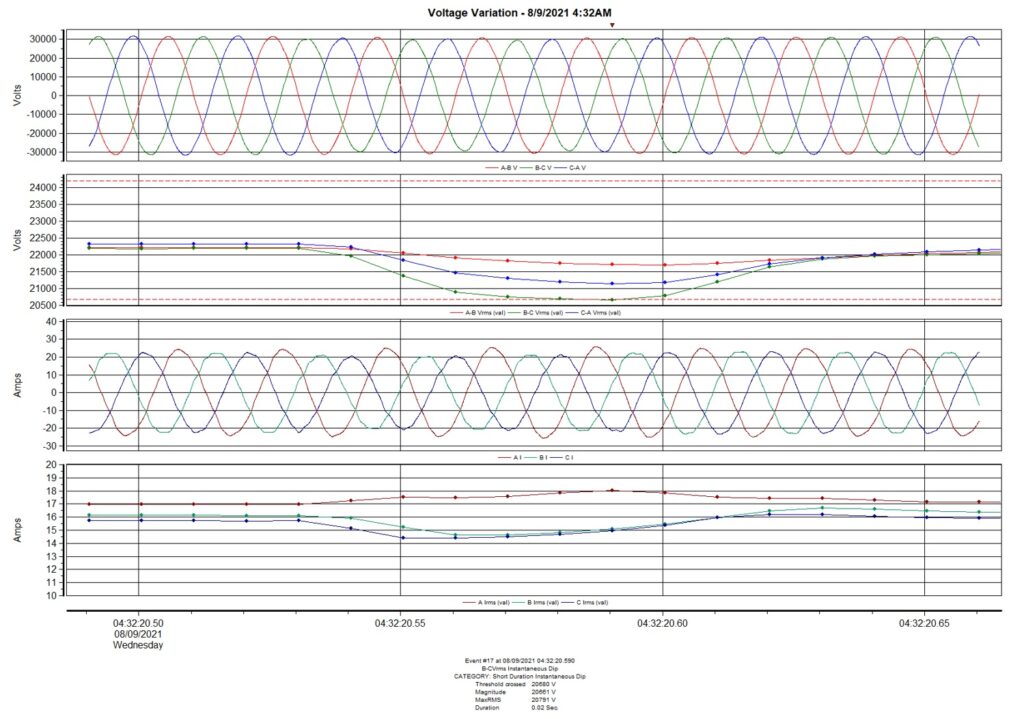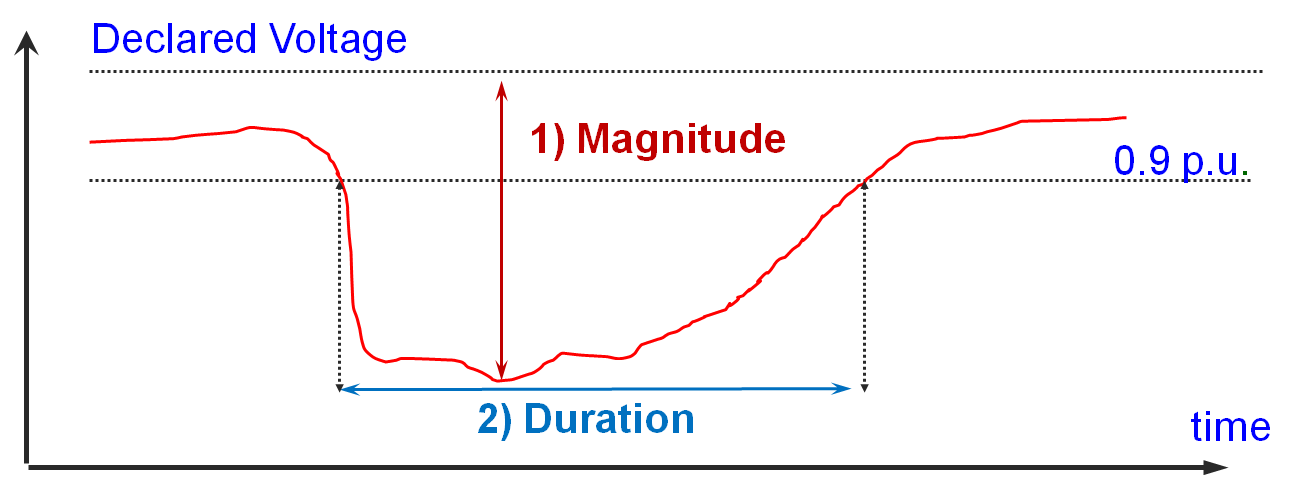On October 13, 2000, the Public Utilities Board announced, “New Measures to Control Voltage Dips”, which went effective on 1 November 2000.
The new measures include reviewing a licensed electrical engineer (LEE)’s performance if the electrical installation(s) under his charge had caused a total of 3 voltage dips, within a period of 2 years.
This was the beginning of having all voltage dip incidents (date, site, LEE-in-charge) published on the Authority’s website.
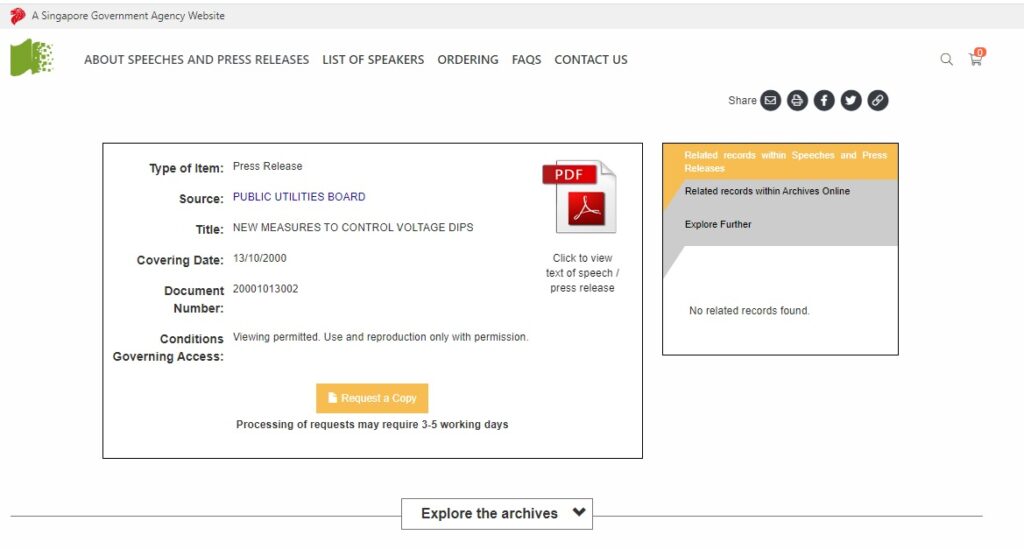
Then, the utility’s (PowerGrid) power quality section, the Power Quality and Load Analysis (PQLA) section, was just being formed. The island-wide power quality monitoring system (PQMS) was still in the works. It became operational somewhere in 2001-2002 with 80+ PQ monitors monitoring voltage levels from 22kV to 230kV.
Singapore’s 230kV transmission network was just being split into two networks, effectively minimizing the impact of a 230kV voltage dip from one another.
Voltage dip, then and now is still a costly affair for sensitive industries. While just lasting in terms of milliseconds, it can have a detrimental impact on production processes, especially those in the semiconductor-related industries.
The utility via its subsidiary (SP Systems) introduced (shortly after in October 2002), a voltage dip mitigation device, known as the Dynacom. It was a single-phase ultra-capacitor-based device meant to compensate voltage dips as low as 40% of nominal and for up to 1 second. It was targeted at protecting sensitive control circuits.
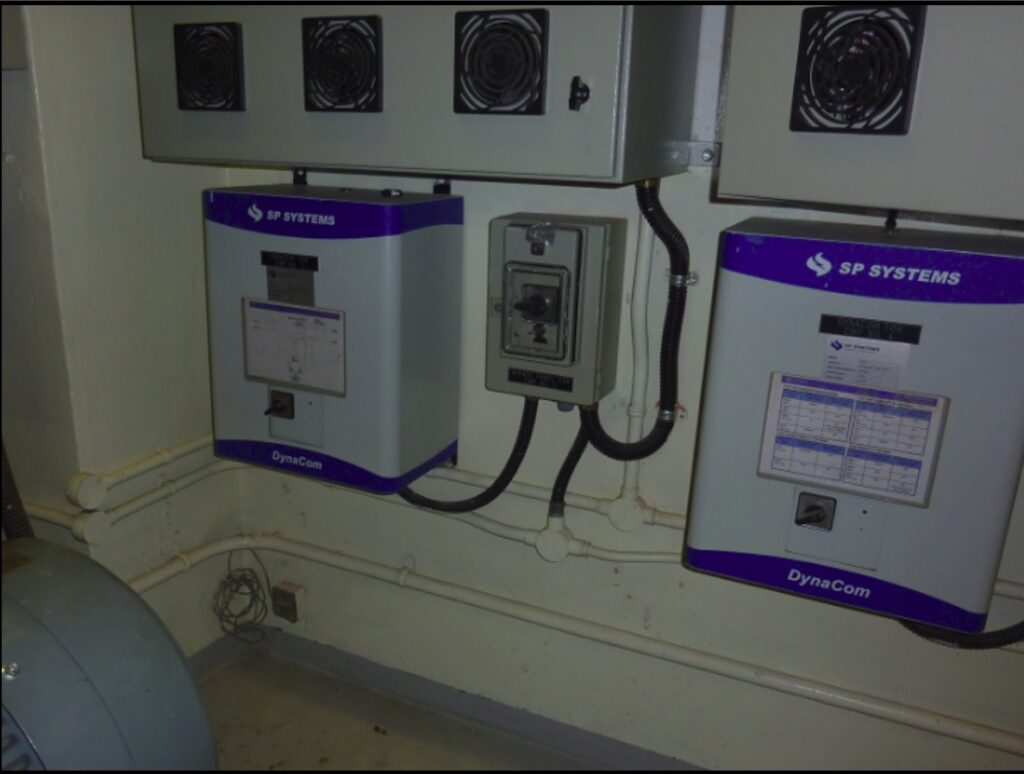
Fast track to today and the number of PQ monitors has more than doubled. The PQMS has enabled the utility to keep track and map out its voltage dip performance (System Average RMS Frequency Index – SARFI map) to the various regions of the island.
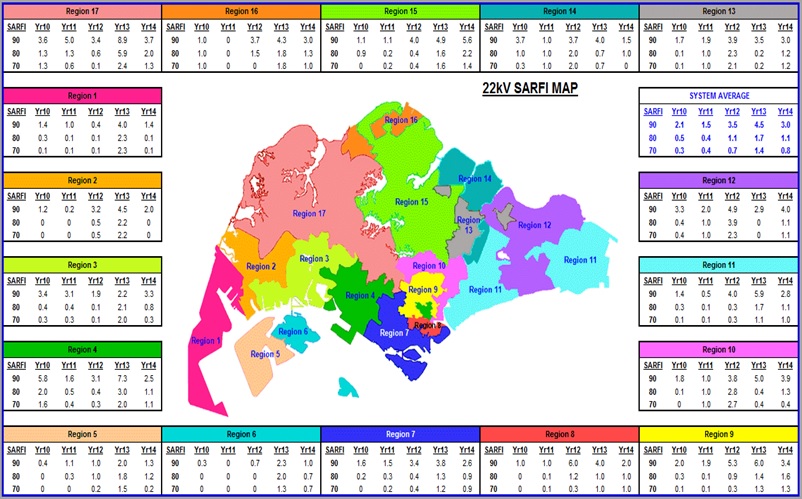
Singapore’s 230kV transmission network has since being split into 4 parts, limiting the significant impact of a 230kV voltage dip to just 1/4 of the island.
With inter-connectivity to our ASEAN neighbours being the talk of the town these days to improve the reliability of the electricity grid, we must not forget it does come with some downside as well.
Being inter-connected, any fault that occurred in one country’s electrical network can be seen in another. For instance, right now, Singapore is connected to Malaysia at 230kV. Any faults on either side of the network will be seen by both.
Here, in a recent event whereby a Tenaga Nasional Berhad (TNB)’s transformer was reported to have tripped. It had caused a voltage variation here in the eastern part of Singapore.
